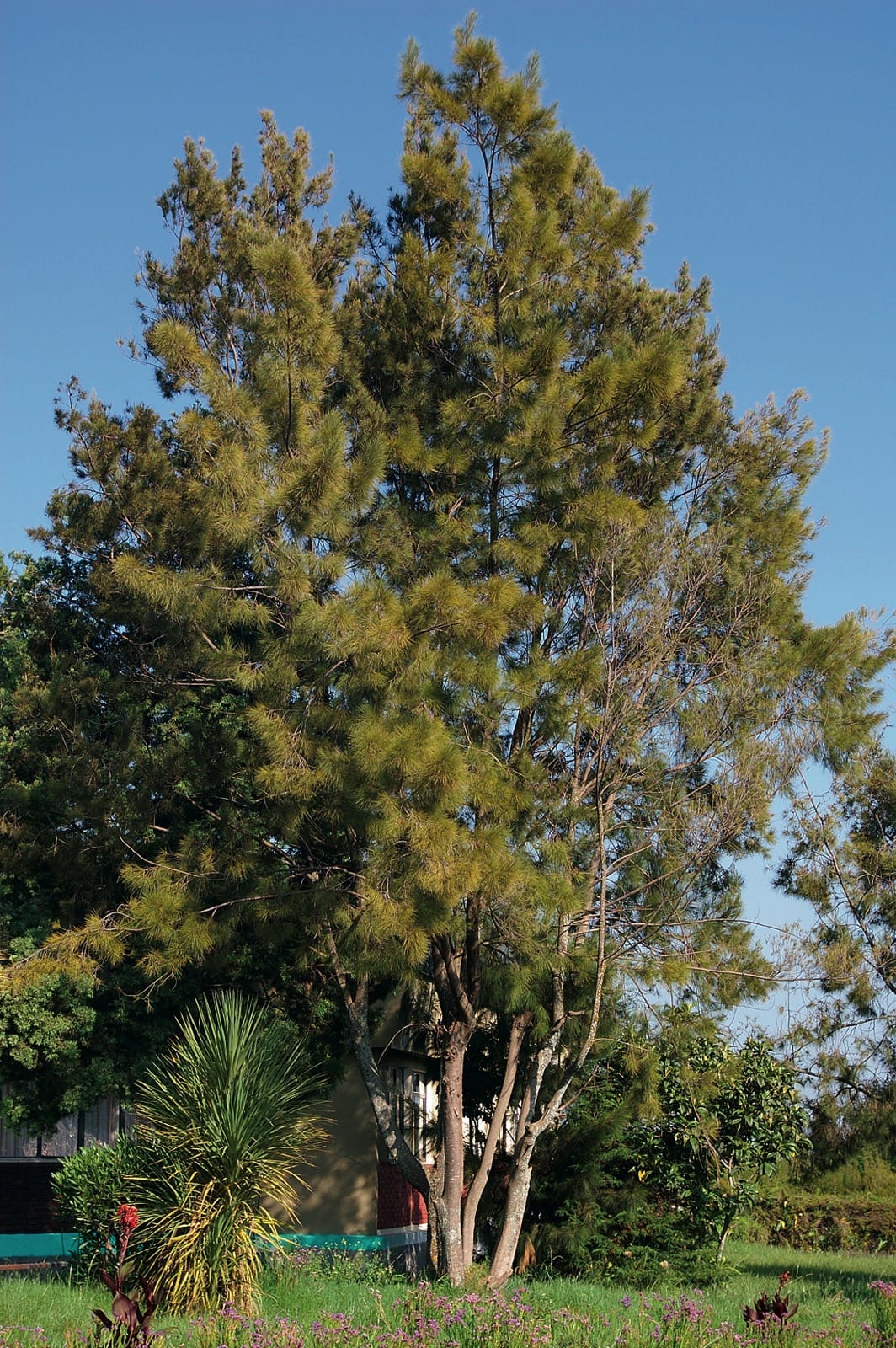Casuarina cunninghamiana
Credits
Article from New Trees by John Grimshaw & Ross Bayton
Recommended citation
'Casuarina cunninghamiana' from the website Trees and Shrubs Online (treesandshrubsonline.
Genus
Common Names
- River Oak
- River She-oak
Tree 15–35 m. Bark greyish brown, finely fissured and scaly. Branchlets drooping (vigorous specimens) or erect (meagre specimens), articles 0.4–0.9 cm long, usually glabrous; phyllichnia prominently angular, glabrous. Leaves tooth-like; teeth 8–10, erect on new shoots, 0.03–0.05 cm long, yellow at the base, usually withering in time. Monoecious; staminate inflorescences spicate, 0.4–4 cm long with 11–13 whorls per centimetre; pistillate inflorescences sparsely pubescent, 0.7–1.4 × 0.4–0.6 cm, bracteoles broadly acute. Flowers inconspicuous. Fruit a samara, 0.3–0.4 cm long. Wilson & Johnson 1989. Distribution AUSTRALIA: northeast Queensland to southeast New South Wales, including the Australian Capital Territory. Habitat Grows along permanent freshwater streams. USDA Hardiness Zone 9–10. Conservation status Not evaluated. Illustration NT222.
Owen Johnson (2007) reports on several trees of Casuarina cunninghamiana growing on the western fringes of Britain and Ireland, the largest of which is a 6 m (14 cm dbh) tree in Brynmill Park, Swansea, which has survived on the site of a demolished greenhouse – although said to be ‘of little ornament’. There are trees of 5 m at Trengwainton and Tregothnan in Cornwall, and it was ‘thriving’ when seen at Glasnevin in 2003 (Johnson 2007). In Florida it is regarded as a ‘Prohibited aquatic plant, Class 1’ (PLANTS Database 2008) for its rapidly self-sowing tendencies, but in its native Australia it is valued as an ornamental (Metro Trees 2007).

